Through a practice-based research approach, we collaborate with educators, families, professional development providers, and state departments to produce evidence-based resources that are applicable to educators. Our books are highlighted here. We also publish peer-reviewed research, evaluation measures, briefs, guides, curricula, and reports. See our vitae for a condensed list of our publications.
Competency lessons and student workbooks. College & Career Competency Framework.

Each lesson set outlines more than 25 instructional activities for specific grade-level clusters (e.g., K–2, 3–6, 7–12). The lessons include explicit instruction and application elements that teachers can modify based on students’ experiences and needs. Each lesson set is accompanied by a PDF student workbook with worksheets that can be reproduced to facilitate learning.
—College & Career Competency Framework
Gaumer Erickson, A. S., & Noonan, P. M. (2022). Teaching self-regulation: 75 instructional activities to foster independent, proactive students, grades 6–12. Solution Tree.
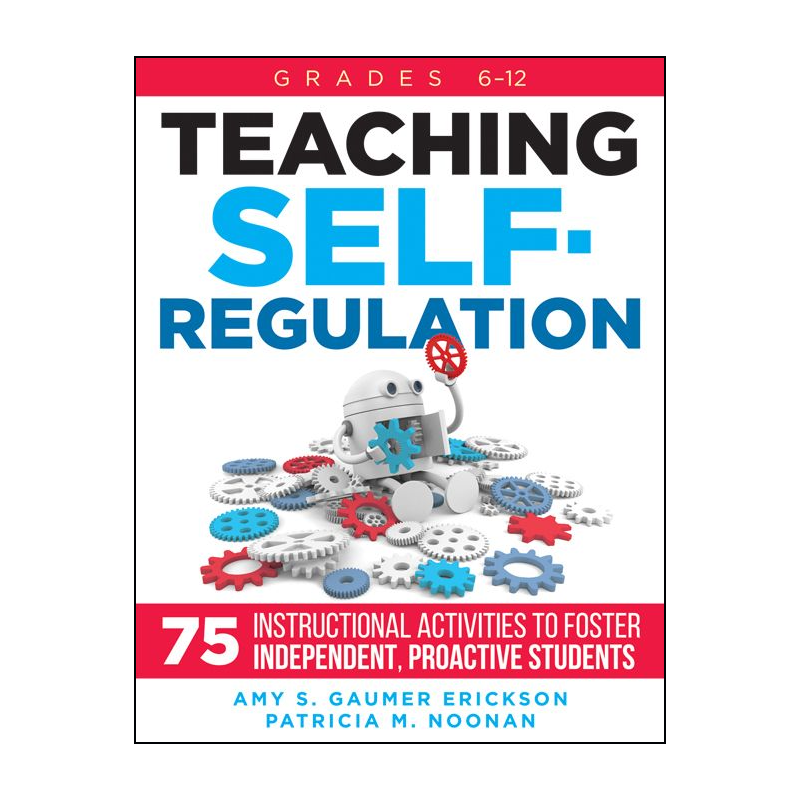
Self-regulation fuels students to become socially and emotionally engaged, lifelong learners. With this timely resource you’ll gain 75 instructional activities to teach self-regulation in any secondary classroom. Ample teacher-tested tools and templates are also included to help you create authentic learning experiences and deliver effective feedback.
Noonan, P. M., & Gaumer Erickson, A. S. (2018). The skills that matter: Teaching intrapersonal and interpersonal competencies in any classroom. Corwin.
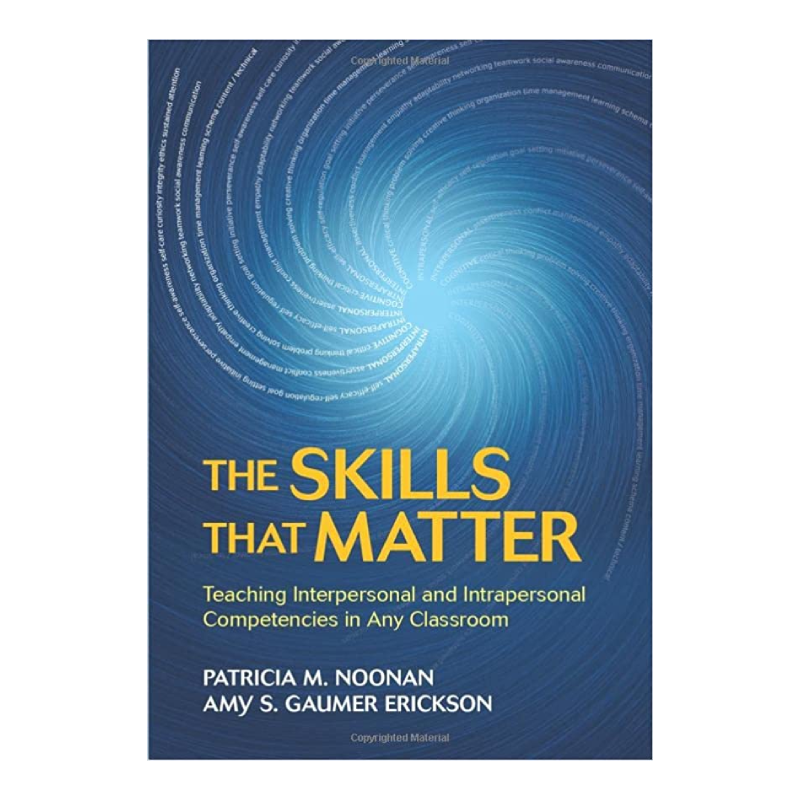
Many students leave high school without the skills they need to succeed in postsecondary education and the workforce. How can we better equip students for lifelong success? Research demonstrates that intrapersonal and interpersonal competencies impact student behavior and achievement, increase graduation rates, and promote strong post-school outcomes. The Skills That Matter provides middle and high school educators with the resources, tools, and practical examples to teach key intrapersonal and interpersonal competencies, including self-regulation, goal setting, self-efficacy, assertiveness, and conflict management. Readers will find
- Competency-specific evidence-based instructional strategies with examples, and
- Tools such as sample instructional plans, formative assessments, and student-friendly products.
This book provides teachers with the practical information they need to better develop socially and emotionally engaged, career-equipped, lifelong learners.
Gaumer Erickson, A. S., Sanford, H. G., Patton, J. R., & Clark, G. M. (2015). Transition instruction guide: Standards-based activities. PRO-ED.
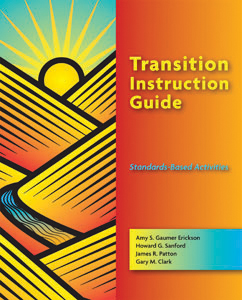
The Transition Instruction Guide provides middle and high school teachers interesting and engaging activities and resources to help students reach their transition goals. Lessons include interactive activities using the community, family, and internet resources to involve students in real-world situations. The Guide aligns instruction directly with the 57 Transition Skills identified with the Transition Planning Inventory–Second Edition (TPI-2) or through any transition assessment.
Instructional activities are organized in the broad areas of Working, Learning, and Living and include eight topics within these areas—many linked to the Common Core State Standards. These links provide educators a means of achieving standards relevant to the school-to-adult-living transition process while connecting language arts and mathematics standards to real life.
Noonan, P. M. (2013). Transition teaming: 26 strategies for interagency collaboration. Council for Exceptional Children.
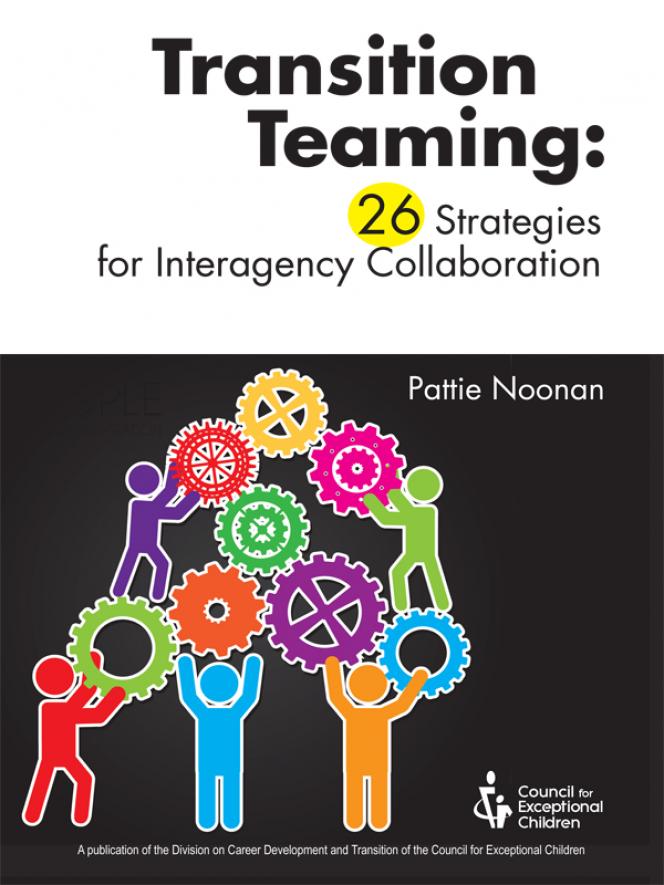
Schools and community agencies must work together to provide transition services to secondary students with disabilities. Effective transition requires the resources and expertise of adult service agencies, community groups, employers, families, school transition specialists, teachers, and other practitioners. This book provides a step-by-step process and concrete strategies by which secondary special educators can build collaborative relationships with service agencies and others in the community to provide transition services. Twenty-six strategies are broken down into specific activities to bring the needed groups and individuals to the table and into transition teams, and communicate effectively to plan and deliver transition services that are collaborative, effective, and sustainable.
—Council for Exceptional Children
Gaumer Erickson, A. S., Clark, G. M., & Patton, J. R. (2013). Informal assessments for transition planning (2nd ed.). PRO-ED.
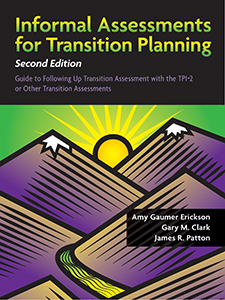
Informal Assessments for Transition Planning is an assessment resource that school-based personnel can use to determine or confirm transition strengths, preferences, interests, and needs for appropriate transition planning in the IEP. This resource can be used as a way to extend and/or confirm information derived from the Transition Planning Inventory–Second Edition (TPI-2) or as a stand-alone material to do initial probes of strengths, preferences, interests, and needs that will engage students and parents in the process of self-assessment and planning for their IEP meetings.
